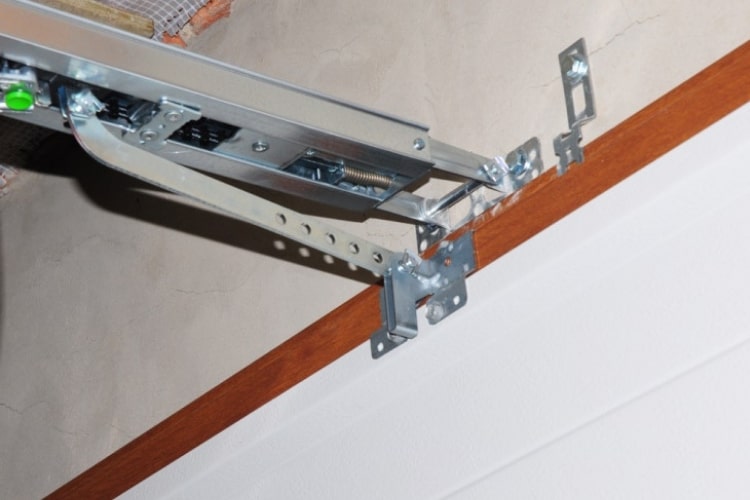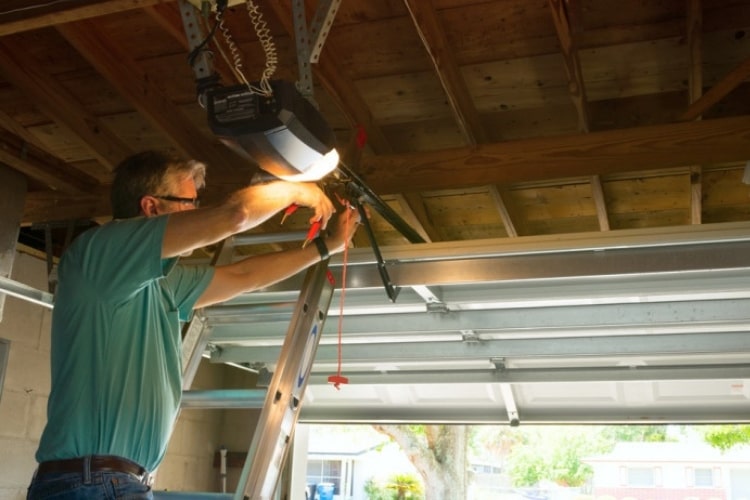Garage Door Repairs: Fix Your Garage Door
Although it may seem like something better left to the professionals, fixing your garage door is often a task you can handle yourself. Indeed, although there may be times in which the damage is too extensive or dangerous to repair on your own, there are often minor malfunctions that require simple, minor fixes. That said, the following is a short guide designed to help you assess the damages to your garage door and hopefully fix it yourself.

Garage Door Repairs: Inspect Metal Tracks
One of the top ways to manage your own garage door repairsOpens a new window is by inspecting the metal tracks. Take observation of the mounting brackets (used to hold the tracks to the walls), check to see if they are loose, and tighten them as needed. Moreover, you will also want to check the tracks for flat spots, dents, and other issues, which can be easily fixed by pounding them with a rubber mallet or using a hammer with a block of scrap would. In the event that you discover they have been too badly damaged, they will need to be replaced. Additionally, you can also clean the rollers and tracks with a brush and some concentrated household cleaner and add lubrication to ensure they are fully functional.
Align the Tracks
Another DIY method of repairing your garage door is by making sure they are properly aligned. On the one hand, horizontal tracks should have a slight downward slant towards the back of the garage. On another hand, roll-up doors should have vertical sections that are perfectly plumb and both tracks must be set at the same height on the garage walls. Either way, if you discover that your tracks are not properly aligned, loosen the screws or bolts that are holding the mounting brackets, and carefully tap the tracks back into position. Using the level, reexamine the alignment of the tracks. Once they are in the right position, be sure to retighten the bolts or screws.

Garage Door Repairs: Address Specific Issues
In addition to cleaning and aligning the tracks, there are ways to address specific issues you may be having with your garage. The following is an overview of DIY fixes for common issues that may be affecting the functionality of your garage door.
- Popping Noises– If your garage makes loud popping noises when used, this is a sign that it needs new rollersOpens a new window. A simple process that typically takes an hour or less, be sure to consult with an expert to ensure you purchase all necessary materials before beginning the job.
- Scraping Noises– If your garage door makes a scraping noise when used, this could be for a few reasons: a spring cable or extension spring cable may be frayed, your end bearing plate may be tilted, the reinforcing strut could be misaligned, or the extension spring cable pulleys could be worn out. If you are dealing with a frayed cable or worn out pulleys or springs, you can simply purchase the part and follow the simple instructions for replacement.
- Door Won’t Fully Shut– If you are dealing with a garage door that won’t close completely, this likely means the close limit switch needs to be readjusted. With the proper guidanceOpens a new window, you can complete this task yourself.
- Frozen Door– In the midst of some of the coldest weather this nation has ever seen, you just might need a way to fix your frozen garage door. If your garage door was manufactured within the last 15-years, it should include a power adjustment setting to help you increase the power and restore the functionality of the door.
- Squeaking Noises– One of the most annoying issues you may deal with regarding your garage door, squeaking noises are often caused by a lack of lubrication. Although this issue can be a major nuisance, it can often be fixed quickly with the help of the proper lubricant. To lubricate your garage door, simply shut the garage door, get a ladder, lubricant, as well as protective glasses. From there, you will simply spray the silicon-based lubricant on the track and chain until the entire track is covered.
- Sagging Doors– Not only are sagging garage doors unsightly but they are also a pain to operate. Luckily, with the help of tension rods, you can DIY. By positioning the rods diagonally from top to bottom on the back of the door, once they have been installed, simply straighten them, which will, in turn, straighten the door.
Overall, as much as we depend on our garage doors to remain fully functional, dealing with various issues can be a major nuisance. Some of these repairs can be handled on your own with the help of the proper instructions and materials, and some problems are best left to the professionals!





